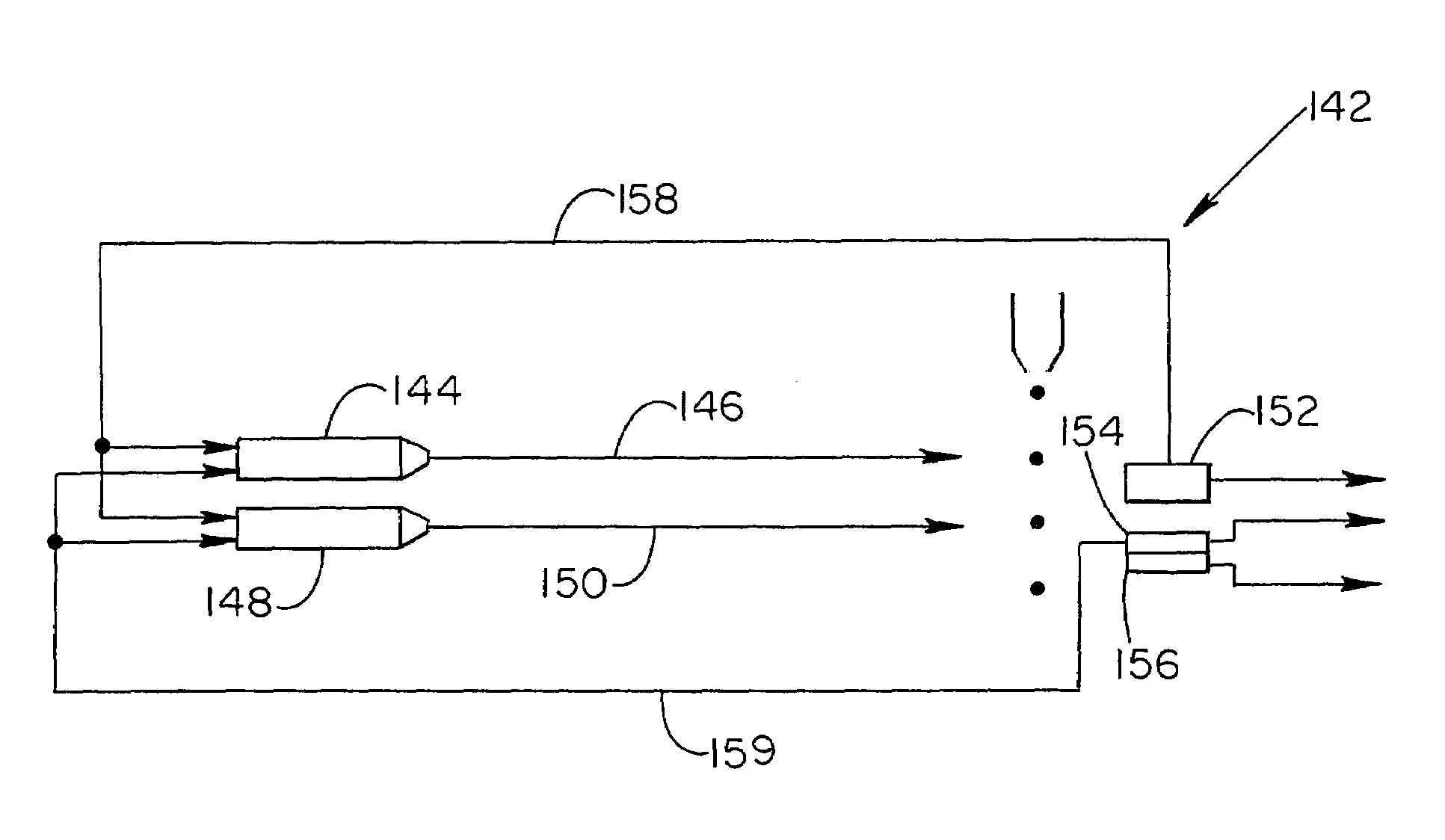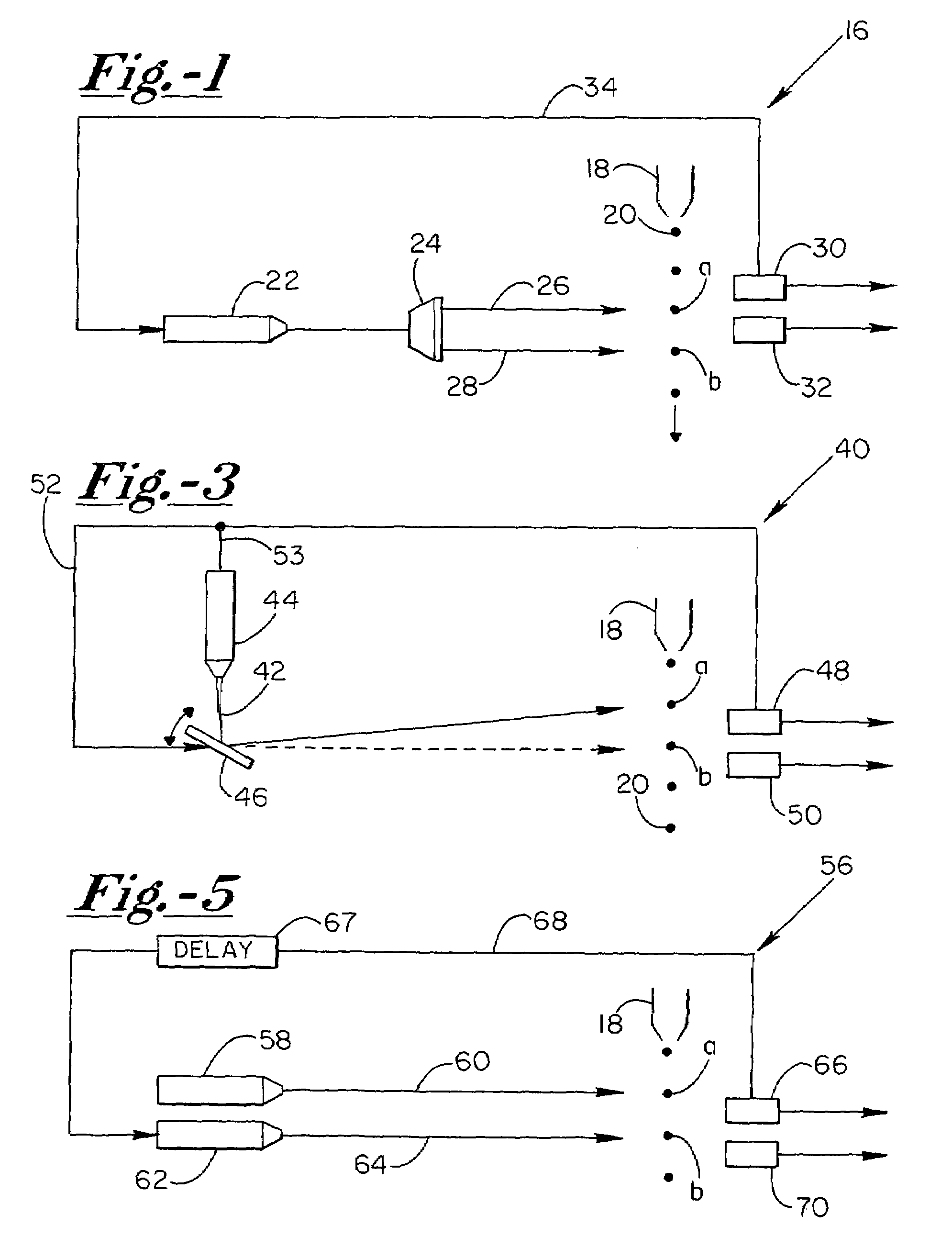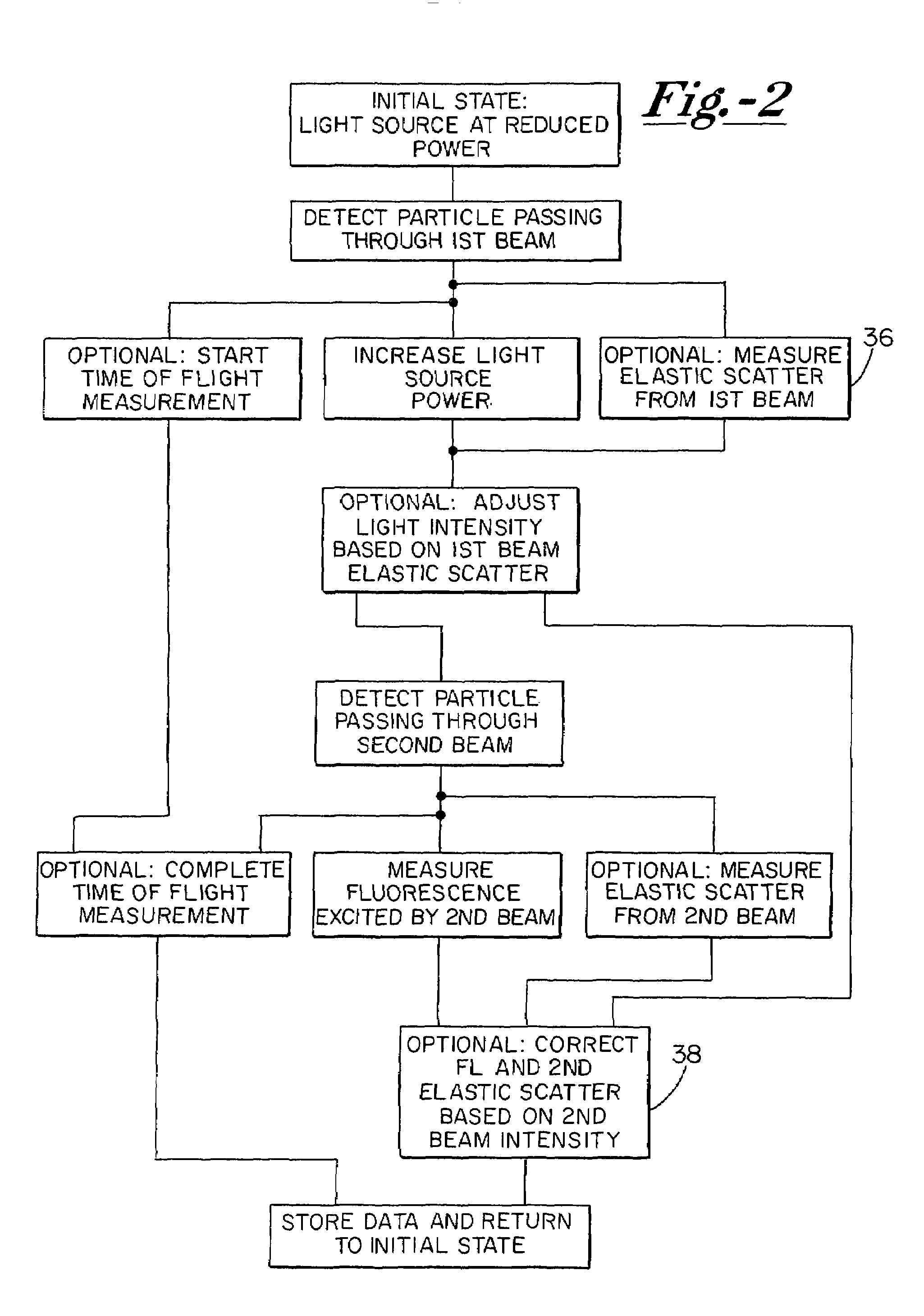Analysis systems detecting particle size and fluorescence
a technology of analysis systems and fluorescence, which is applied in the direction of fluorescence/phosphorescence, optical radiation measurement, spectrometry/spectrophotometry/monochromators, etc., can solve the problems of reducing the speed of the overall system, presenting its own problems, and reducing so as to improve the useful life of each laser and its associated components, the effect of simplifying the system
- Summary
- Abstract
- Description
- Claims
- Application Information
AI Technical Summary
Benefits of technology
Problems solved by technology
Method used
Image
Examples
Embodiment Construction
[0063]Turning to the drawings, FIG. 1 shows an electro-optical system 16 for characterizing particles or other aerosol components (such as droplets) carried in a gas stream. The aerosol is drawn from a nozzle 18 into a partially evacuated chamber, for aerodynamic sizing and exposure to excitation energy which, depending on the nature of the particles, can cause the particles to emit energy in response to the exposure, i.e. to fluoresce. Particles 20 are carried serially, downwardly as viewed in the figure. The system employs a single diode laser 22 for generating a laser beam in the violet range, more particularly at a wavelength of 405 nm. Other violet wavelengths can be employed, as well as wavelengths in the ultraviolet (UV) range, e.g. about 200–400 nm. Beam splitting optics 24 are employed to split the laser beam into a pair of beams 26 and 28, both of which intersect the aerosol stream. Laser 22 is operated to provide beams 26 and 28 in the continuous wave (CW) mode.
[0064]As e...
PUM
| Property | Measurement | Unit |
|---|---|---|
| wavelength | aaaaa | aaaaa |
| wavelength | aaaaa | aaaaa |
| wavelengths | aaaaa | aaaaa |
Abstract
Description
Claims
Application Information
 Login to View More
Login to View More - R&D
- Intellectual Property
- Life Sciences
- Materials
- Tech Scout
- Unparalleled Data Quality
- Higher Quality Content
- 60% Fewer Hallucinations
Browse by: Latest US Patents, China's latest patents, Technical Efficacy Thesaurus, Application Domain, Technology Topic, Popular Technical Reports.
© 2025 PatSnap. All rights reserved.Legal|Privacy policy|Modern Slavery Act Transparency Statement|Sitemap|About US| Contact US: help@patsnap.com



